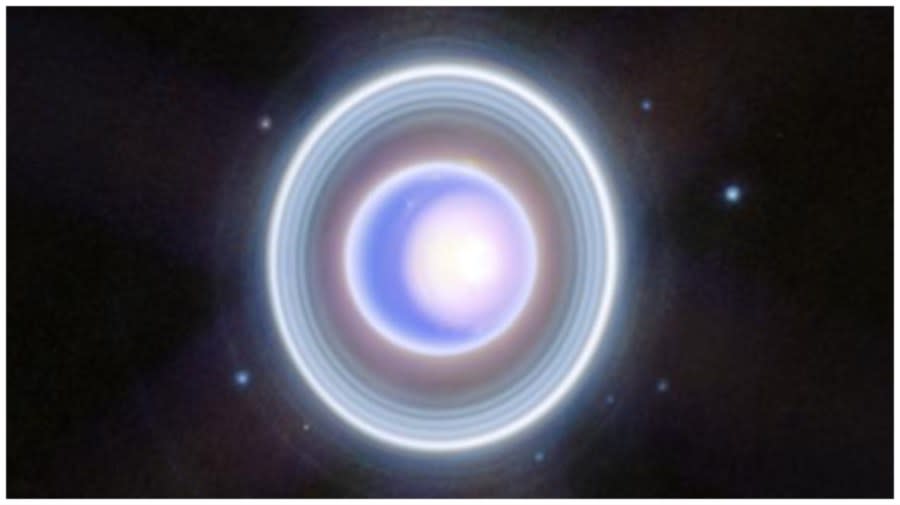NASA releases new images of Uranus and its moons
NASA released new images Monday that show Uranus, the seventh planet from the sun, in greater detail than ever before.
The new images of Uranus were captured by the James Webb Space Telescope and build on the photos released earlier this year, adding “additional wavelength coverage for a more detailed look” at the planet.
“With Webb’s unparalleled infrared resolution and sensitivity, astronomers now see Uranus and its unique features with groundbreaking new clarity. These details, especially of the close-in Zeta ring, will be invaluable to planning any future missions to Uranus,” NASA said in the press release.
“Webb captured this dynamic world with rings, moons, storms, and other atmospheric features – including a seasonal polar cap,” NASA said in the press release, noting the earlier version this year included only a two-color version of the polar cap.
The Webb telescope photographed many of the planet’s 27 known moons and was able to capture the dim inner and outer rings.

The new images also provide a new idea of what the planet actually looks like. In the 1980s, Voyager 2 saw, in visible wavelengths, the planet “as a placid, solid blue ball.” Now, in infrared wavelengths, “Webb is revealing a strange and dynamic ice world filled with exciting atmospheric features.”
The planet is unique in that it spins on its side, which creates the unusual seasonal polar cap that the newly released photos show in greater detail.
“One of the most striking of these is the planet’s seasonal north polar cloud cap. Compared to the Webb image from earlier this year, some details of the cap are easier to see in these newer images. These include the bright, white, inner cap and the dark lane in the bottom of the polar cap, toward the lower latitudes,” NASA said.
“Several bright storms can also be seen near and below the southern border of the polar cap. The number of these storms, and how frequently and where they appear in Uranus’s atmosphere, might be due to a combination of seasonal and meteorological effects,” NASA continued.
NASA also said that these images of Uranus can help astronomers study similarly sized exoplanets, referring to Uranus as an “exoplanet in our backyard.” They hope to study “how planets of this size work, what their meteorology is like, and how they formed.”
“This can in turn help us understand our own solar system as a whole by placing it in a larger context,” they added.
For the latest news, weather, sports, and streaming video, head to The Hill.


